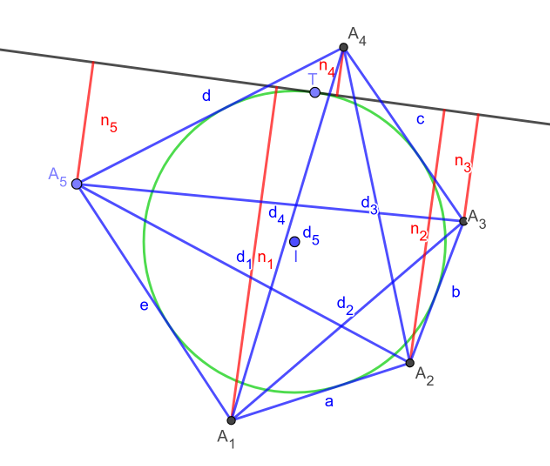This question is closely related to my previous question.
Can you prove the claim given below? The following claim is a conjectured generalization of Harcourt's theorem.
Claim. Let $A_1,A_2 \ldots A_n$ be the vertices of $n$-sided bicentric polygon with semiperimeter $s$ and area $K$. Let $d_i$ be the length of the line segment whose endpoints are polygon's vertices adjacent to the vertex $A_i$ . Let line $t$ be the tangent to the polygon's incircle at any point on that circle. Denote the signed perpendicular distance of the vertex $A_i$ from the tangent line as $n_i$ , with a distance being negative if and only if the vertex is on the opposite side of the tangent line from the incenter. Then, $$K=\frac{s \cdot \displaystyle\sum_{i=1}^n n_i \cdot d_i}{\displaystyle\sum_{i=1}^n d_i}$$
ImagePicture for the case $n=5$:
GeoGebra applets that demonstrate this claim in the case of $n=5$ and $n=6$: Area of bicentric pentagon , Area of bicentric hexagon. The proofs for the case $n=3$ and the case $n=4$ can be found here and here ,respectively.

